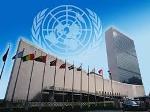Statistics for the SDGs: the devil is in the indicators

The UN Statistical Commission concluded its meeting in New York last March 6 without agreeing on a list of indicators to measure the achievement of the Sustainable Development Goals (SDGs). The body is composed of 24 governments and it oversees the work of the UN statistical Division, the most important global agency on world indicators, in charge, among other things of defining how GDP is conceptualized and counted.
A preliminary list of indicators compiled from the suggestions of expert groups was deemed premature by the Commission, and instead a roadmap for the development and implementation of the indicator framework by the next Commission in 2016 was endorsed.
According to that plan, the UN Statistical Division will submit a proposal before the end of 2015, but after the September High Level Meeting of the General Assembly where the new development agenda, including the SDGs, their means of implementation and the monitoring and review mechanisms have been approved by the governments.
The SDGs form a package of 17 Goals and 169 targets negotiated by the governments over more than one year and as such they reflect a carefully constructed consensus between developed and developing countries. The new development agenda of which the SDGs will be a part is supposed to substitute the Millennium Development Goals, a much smaller set of aspirations and targets that has 2015 as its end date.
The MDGs basically set minimum well-being standards largely met already by developed and middle-income countries. Only very poor countries were actually required to do major efforts to meet those goals and developed countries only committed in Goal 8 to support those efforts without defined targets and dates.
The SDGs include instead anti-poverty targets relative to national standards for all countries and they additionally address inequalities, Environmental sustainability and some key systemic issues. They are universal both in terms of setting minimum standards on health, education and social security for all, but also in demanding action from all countries taking into account their different circumstances.
Some goals are obvious in terms of how to measure them. That is clearly the case of targets 1.1 and 1.2 that require countries by 2030 to eradicate poverty under USD 1/day and to reduce by half poverty as defined by national standards (implying action in developed countries also, where poverty as nationally defined has increased dramatically since the 2008 financial and economic crisis).
Target 3.3 is a bit more complicated since it promises to “by 2030, end the epidemics of AIDS, tuberculosis, malaria and neglected tropical diseases and combat hepatitis, water-borne diseases and other communicable diseases.” That will require at least eight indicators to measure, but it is still just a technical complexity to compute them, not an issue for political discussion.
But when trying to find an indicator for target 10.5 on “regulation and monitoring of global financial markets and institutions” the only one suggested so far is the worldwide adoption of a financial transaction tax (Tobin tax).
Such a tax is certainly a necessary tool to regulate global finances, but it is far from enough and the target should not be deemed as met unless additional regulations are imposed to avoid the morally hazardous situation of financial institutions that are “too big to fail” and will therefore be unavoidably bailed out with public monies if they fail again.
On target 17.15 that demands to “respect each country’s policy space and leadership to establish and implement policies for poverty eradication and sustainable development” the proposed targets only count the number of countries signing on for sharing of fiscal information or the automatic transfer of financial information at world level.
While fiscal information is needed to exercise fiscal sovereignty and consolidate policy space, any adequate assessment of such space should take into account, for example, the number and relevance of the conditionalities imposed by the World Bank and the IMF on their loans or the policy restrictions imposed by bilateral and multilateral investment agreements.
The technical choice of indicators can even completely rewrite what the governments agreed to. Target 17.16, for example, promises to “enhance the global partnership for sustainable development, complemented by multi-stakeholder partnerships.” The only suggested indicator is the number of multi-stakeholder partnerships active in developing countries. That would reduce the goal to a promotion of private sector involvement in development activities, completely distorting the notion of the global partnership for development as primarily a commitment of governments.
By postponing the definition of the details until after an agreement is reached on all aspects of the new agenda (its goals, the means of implementation and the accountability structure) the risks of the technicalities derailing the political consensus are limited.
Sakiko Fukuda-Parr and Desmond McNeill warned precisely about that in their presentation to the commission: “the SDGs, like the MDGs, may even close off democratic space (…) because they promote a dominant language that frames development debates in a technical, depoliticised way. Issues of global governance may be left out in response to the imperatives of simplification, quantification and concreteness.”
Can we establish an accountability framework without the cumbersome counting of several indicators for each of the 169 SDG targets? Fukuda-Parr and McNeill think it can be done: “The Universal Declaration of Human Rights, while simple, carries none of the problems and distortions of global goals. We can start a global effort to secure reforms in global governance and state accountability on the basis of Article 28, which states “Everyone is entitled to a social and international order in which the rights and freedoms set forth in this Declaration can be fully realized.”
And such an article, as well as all the other rights enshrined in the Universal Declaration is not just an aspiration. It is international law.
By Roberto Bissio.
Source: RightingFinance.